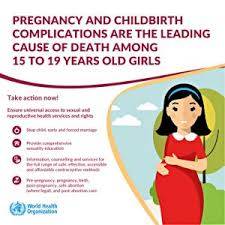Teenage pregnancy is a growing concern in many parts of the world. It is defined as pregnancy occurring in a girl aged between 13 and 19 years. This phenomenon has far-reaching consequences for the individuals involved, their families, and society at large. In this article, we will discuss the causes, consequences, and prevention of teenage pregnancy.
Causes of Teenage Pregnancy
There is no single cause of teenage pregnancy. Rather, it is the result of a combination of factors that may include lack of education, poverty, peer pressure, and inadequate access to contraception. Young girls may also be influenced by popular culture and media that promote sexual activity as normal and desirable. Some also face sexual abuse, which puts them at heightened risk of pregnancy.
Consequences of Teenage Pregnancy
Teenage pregnancy has several social, financial, and health consequences. For the individual, it can lead to a higher risk of health complications during pregnancy and childbirth, including premature birth, low birth weight, and maternal mortality. It can also have a significant impact on the future prospects of the young mother, limiting her opportunities for education and career development. Teenage pregnancy also has an impact on the family, leading to higher rates of poverty and decreased educational attainment for both mother and child. Additionally, teenage pregnancy can have a wider social impact, creating a cycle of poverty and social deprivation.
Prevention of Teenage Pregnancy
Prevention of teenage pregnancy is crucial and involves a multifaceted approach. Education is key, with a need for comprehensive sex education that provides information on contraception, healthy relationships, and decision-making. Improved access to reproductive health services and contraception is also a necessary component, as young people need access to affordable and effective methods of contraception to prevent unintended pregnancies. This includes access to emergency contraception, which can prevent pregnancy after unprotected sex. Additionally, families and communities need to be engaged in conversations about sexuality and reproductive health to provide young people with the support and guidance they need.
Conclusion
Teenage pregnancy is a complex issue that requires a collaborative response from governments, healthcare providers, educators, and communities. By addressing the root causes of teenage pregnancy and providing young people with the tools and education they need, we can help ensure their success and well-being for generations to come.


